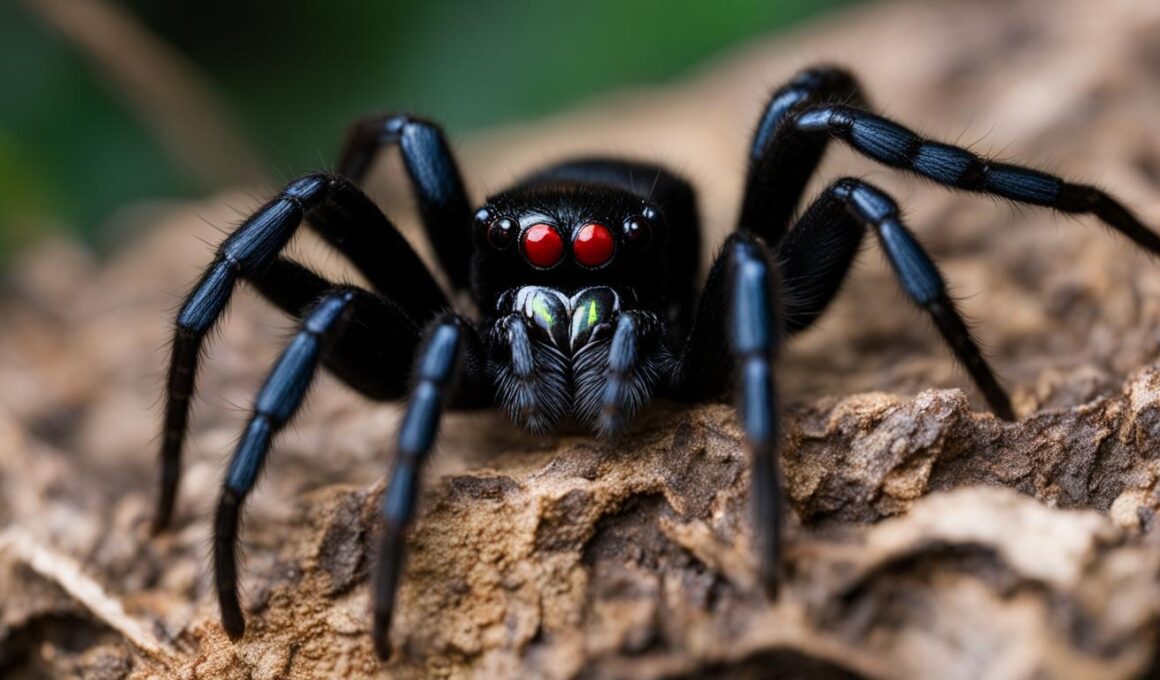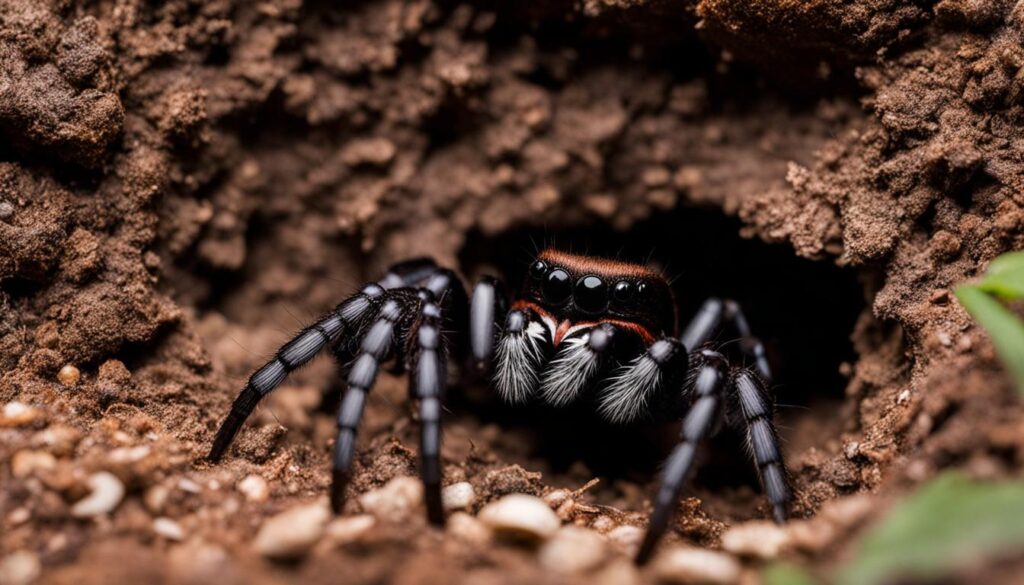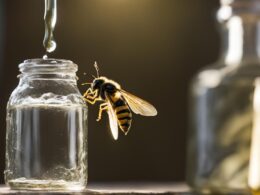If you’ve ever come across a trapdoor spider, you might wonder if it poses any danger to you. In this section, we will explore the topic of trapdoor spider venom and its potential impact on humans. Understanding these spiders’ behavior and knowing how to safely interact with them is essential for your peace of mind.
Firstly, it’s important to note that trapdoor spiders are generally non-aggressive and their venom is of low risk (non-toxic) to humans. Their bites are rarely painful, and they typically only bite if provoked. So, encountering a trapdoor spider shouldn’t immediately raise alarms.
Trapdoor spiders are commonly found in Australia, particularly in drier open ground areas. They have distinct physical characteristics, such as a brown to dark brown body covered in fine hairs and boxing glove-shaped palps in males. Their habitat consists of ground burrows lined with silk.
Should you happen to get bitten by a trapdoor spider, it’s advisable to seek first aid and medical attention if symptoms persist. While the venom of trapdoor spiders is generally not highly toxic, it is always better to err on the side of caution when it comes to your health and well-being.
Stay tuned for the rest of the article to discover more about trapdoor spiders, their habitats, and behaviors, as well as some safety tips for encounters with these fascinating creatures.
About Trapdoor Spiders
Trapdoor spiders are fascinating creatures that belong to the small to medium-sized mygalomorph spider family. These spiders are known for their remarkable ability to dig burrows, which serve as both their shelter and a clever trapping mechanism for unsuspecting insects.
Using a combination of vegetation, silk, or soil, trapdoor spiders construct trapdoors that are strategically placed to capture their prey. These trapdoors are designed with precision, providing the spiders with a hidden advantage as they patiently await the arrival of unsuspecting insects.
Trapdoor spiders are highly carnivorous, relying on a diet that primarily consists of various insects and small prey. This carnivorous behavior ensures that they acquire the necessary nutrients for their survival and reproduction.
With an average lifespan ranging from 5 to 20 years, trapdoor spiders are known for their longevity compared to other spider species. Additionally, female trapdoor spiders have the ability to lay up to 300 eggs at a time, ensuring the continuity of their species through generations.
It’s important to note that trapdoor spiders are commonly found in the Southwestern parts of the USA, particularly in warm and wet areas. Their preferred habitat includes regions with suitable conditions for their burrowing and hunting activities.
By understanding the unique characteristics and behaviors of trapdoor spiders, we gain insight into the marvels of nature and the intricate web of life that exists in our surroundings.
Habitat and Behavior of Trapdoor Spiders
Trapdoor spiders have a specific distribution, primarily found in warm and wet areas, particularly in the Southwestern parts of the USA. These spiders prefer to reside in low embankment areas with natural soil and vegetation. They create burrows with impeccable craftsmanship, acting as their safe haven. The burrows provide them with protection and camouflage from predators.
Unlike some other spider species, trapdoor spiders are not known for being harmful to humans. However, just like any wild creature, they may become defensive if provoked. Their behavior is distinctive and fascinating. The females tend to remain close to their burrows, as they usually lay their eggs here, safeguarded from potential threats. On the other hand, males have a more adventurous lifestyle, frequently venturing out of their burrows in search of potential mates.
When threatened, trapdoor spiders exhibit rapid movement and quick reflexes. They use their impressive speed to avoid danger and seek refuge inside their burrows. Additionally, trapdoor spiders employ a unique hunting technique. They patiently wait inside their burrows, detecting vibration signals from unsuspecting prey nearby. Once prey is detected, the spiders use their fangs to swiftly capture and incapacitate their victims.
It’s important to appreciate the role these remarkable creatures play in maintaining the ecosystem’s balance. Trapdoor spiders contribute to pest control by feeding on various insects and small prey, reducing their populations naturally. As with any wildlife encounter, it is advisable to observe trapdoor spiders from a distance and avoid any actions that may provoke them.
Trapdoor spiders possess intriguing habitat preferences and exhibit captivating behaviors that warrant admiration. Understanding their distribution, habitat, and behavior provides valuable insight into these enigmatic creatures and encourages a deeper appreciation for the natural world we coexist with.
Conclusion
Trapdoor spiders, although possessing venom, are not highly toxic to humans and generally pose a low risk. Their bites can be painful, but they rarely bite unless provoked. If you are unfortunate enough to be bitten by a trapdoor spider, it is crucial to exercise caution and seek medical attention, particularly if you experience persistent or worsening symptoms.
When encountering trapdoor spiders, it is important to remember a few safety tips. First and foremost, avoid provoking these spiders as they are typically non-aggressive. If you come across a trapdoor spider infestation in your home or property, it is advisable to seek professional pest control services to address the issue effectively and safely.
While trapdoor spiders do not pose a significant threat to humans, it is always wise to exercise caution and take appropriate safety measures when dealing with any spider species. By following these safety tips and seeking professional assistance, you can ensure a safe and secure environment for yourself and your family.
Can Bay Leaves Control Trapdoor Spiders as well?
Bay leaves are known for their powerful aroma and ability to repel insects, making them a great option for natural pest control with bay leaves. However, it is not confirmed whether they can effectively control trapdoor spiders. More research is needed to determine their impact on these specific pests.










